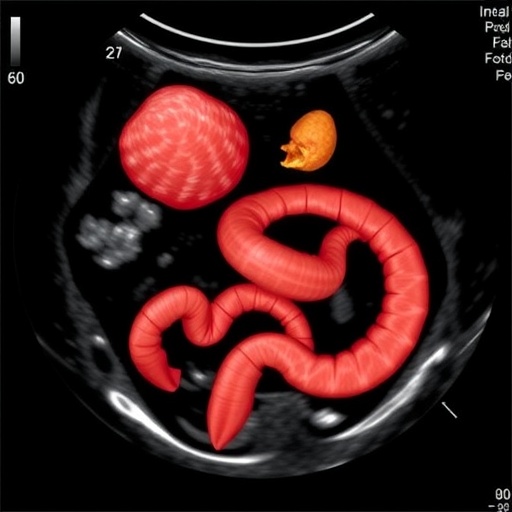PROTECT YOUR DNA WITH QUANTUM TECHNOLOGY
Orgo-Life the new way to the future Advertising by AdpathwayIn a groundbreaking study published in the Journal of Translational Medicine, researchers have unveiled new insights into the role of Polymerase theta in multiple myeloma, a notoriously challenging hematologic malignancy. The study, led by prominent oncologists and molecular biologists, including Li, Ma, and Zuo, highlights the significance of Polymerase theta as a potent target for therapeutic intervention. The researchers have demonstrated that inhibiting Polymerase theta not only stunts tumor growth but also heightens the efficacy of chemotherapeutic agents like melphalan, fostering a dual approach to combat this aggressive cancer.
Multiple myeloma, characterized by the proliferation of malignant plasma cells in the bone marrow, remains an area fraught with challenges in management and treatment. Conventional treatments often yield transient responses, leading to relapse and eventual treatment resistance. The need for innovative therapeutic strategies is critical, and Polymerase theta emerges as a beacon of hope. This enzyme plays a crucial role in the DNA damage repair process, employing an error-prone mechanism that helps malignant cells survive the cytotoxic assault of chemotherapy. By inhibiting this pathway, we can significantly enhance the vulnerability of cancer cells.
In their meticulously designed experiments, the team employed a combination of in vitro and in vivo approaches to decipher the intricate relationship between Polymerase theta activity and the response to melphalan—a potent alkylating agent frequently used in multiple myeloma treatment. The results were striking: not only did Polymerase theta inhibition suppress tumor growth across various models, but it also amplified the DNA damage induced by melphalan. This synergistic effect offers a promising avenue for improving patient outcomes through a combination of targeted inhibition and pharmacological intervention.
One of the compelling findings of the research was the elucidation of the molecular mechanisms at play. Through a series of assays, the researchers were able to demonstrate that the inhibition of Polymerase theta led to increased levels of DNA double-strand breaks. Such breaks, which are inherently lethal to cells, were shown to elicit a more profound apoptotic response when coupled with melphalan treatment. This underscores the potential of Polymerase theta inhibitors in sensitizing cancer cells to conventional chemotherapy, paving the way for a more effective treatment regimen.
The implications of this research extend beyond the confines of laboratory findings. As the scientific community grapples with the challenge of overcoming drug resistance in multiple myeloma, the introduction of Polymerase theta inhibitors as a strategic treatment option could revolutionize therapeutic practices. While the study primarily focused on preclinical models, the findings urge the need for clinical trials to evaluate the safety and efficacy of Polymerase theta inhibition in human subjects, as it represents a novel strategy that could significantly alter the landscape of multiple myeloma management.
Moreover, the promise of this research highlights the importance of personalized medicine in oncology. The tailored approach, where treatments are adjusted based on individual biomarkers and disease characteristics, could benefit immensely from the integration of Polymerase theta inhibition. Identifying patients who exhibit high levels of Polymerase theta activity could allow for risk stratification and the development of optimized treatment plans, ultimately improving survival rates and quality of life.
The robust methodology employed in the study also warrants attention. The researchers used a variety of advanced techniques, including CRISPR-Cas9 gene editing and high-throughput screening, to validate their hypotheses. Such innovative approaches are critical for delineating the complex roles of various molecules involved in cancer progression and treatment response. This meticulous attention to detail not only strengthens the validity of their findings but also establishes a blueprint for future research endeavors in oncology.
As we delve deeper into the implications of this study, it is vital to recognize the potential barriers to translating these findings into clinical practice. The path from bench to bedside is fraught with challenges, including the need for rigorous regulatory approval and comprehensive clinical trials to evaluate the long-term effects of Polymerase theta inhibition. Researchers must remain vigilant in addressing these challenges to ensure that the exciting prospects highlighted by this study come to fruition in the real-world treatment landscape.
Another important aspect of this research relates to the broader field of DNA damage repair mechanisms and oncogenesis. By understanding how Polymerase theta functions within the repair pathways, researchers can unlock additional therapeutic targets that may be relevant for other malignancies. The findings from this study may inspire a wave of new investigations aimed at discovering inhibitors for various components of the DNA repair machinery, thereby broadening the scope of options available for cancer treatment.
Collaboration across disciplines will be paramount in advancing these findings. Oncologists, molecular biologists, and pharmaceutical chemists must work hand in hand to develop new inhibitors and to translate laboratory successes into viable clinical options. The synergy between basic research and clinical application will ultimately dictate the success of these innovative strategies in multiple myeloma and beyond.
In summary, the research led by Li, Ma, and Zuo is a promising step forward in the fight against multiple myeloma. Their findings highlight the essential role of Polymerase theta in cancer survival and response to chemotherapy. By inhibiting this enzyme, not only do we impair tumor growth, but we also prime malignant cells for destruction by conventional therapies like melphalan. The road to clinical application may be long and complex, but the potential benefits of this approach offer a glimpse of hope for those affected by this relentless disease.
As we stand on the cusp of new therapeutic paradigms in oncology, it is essential to remain optimistic yet pragmatic. The journey from initial discovery to clinical realization is arduous, but with each study, we come closer to a time when multiple myeloma can be managed more effectively. This research exemplifies the kind of innovative science that will drive us forward, translating hope into tangible results for patients around the world.
With each finding, we inch closer to uncovering the mysteries of multiple myeloma, a disease that has challenged researchers and clinicians for decades. The work of this research team serves as a reminder of the power of scientific inquiry and the endless possibilities that lie ahead as we seek to conquer cancer.
Subject of Research: Polymerase theta inhibition in multiple myeloma
Article Title: Polymerase theta inhibition impairs tumor growth and amplifies melphalan-induced DNA damage in multiple myeloma
Article References: Li, Q., Ma, C., Zuo, L. et al. Polymerase theta inhibition impairs tumor growth and amplifies melphalan-induced DNA damage in multiple myeloma. J Transl Med 23, 1079 (2025). https://doi.org/10.1186/s12967-025-07065-2
Image Credits: AI Generated
DOI: 10.1186/s12967-025-07065-2
Keywords: Polymerase theta, multiple myeloma, DNA damage, chemotherapy, melphalan, cancer research, therapeutic intervention, gene editing.
Tags: cancer cell vulnerabilityDNA damage repair mechanismshematologic malignancies researchinnovative cancer therapiesmelphalan chemotherapy enhancementmultiple myeloma treatment strategiesoncological breakthroughsplasma cell malignanciesPolymerase theta inhibitiontargeted cancer therapiestherapeutic interventions in oncologytumor growth inhibition


 4 hours ago
6
4 hours ago
6





















 English (US) ·
English (US) ·  French (CA) ·
French (CA) ·